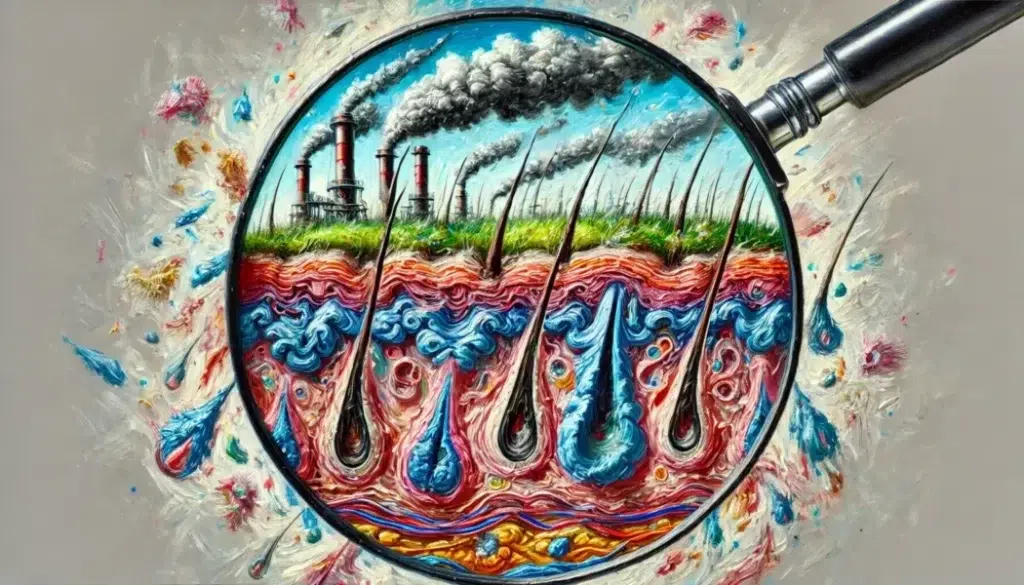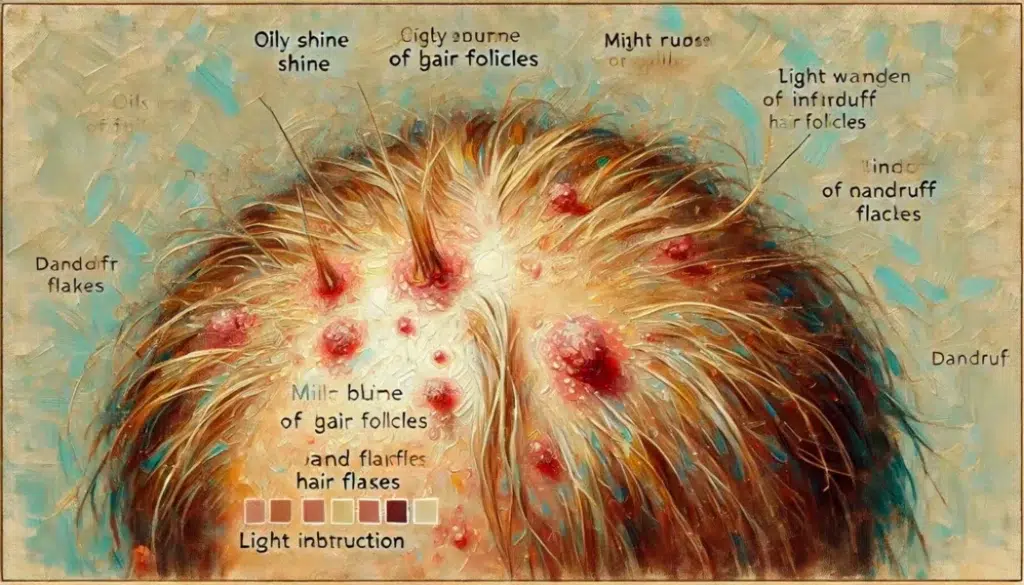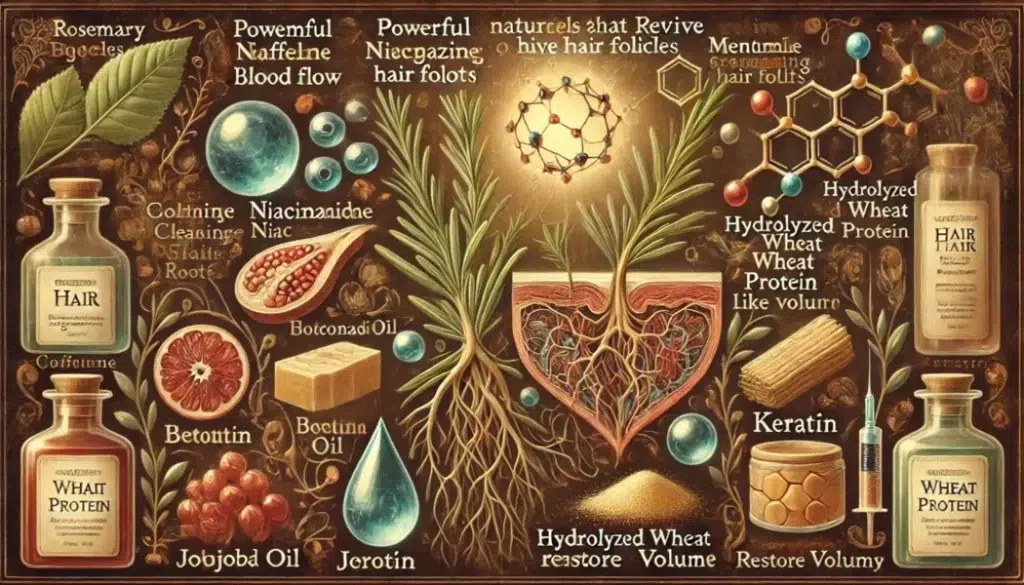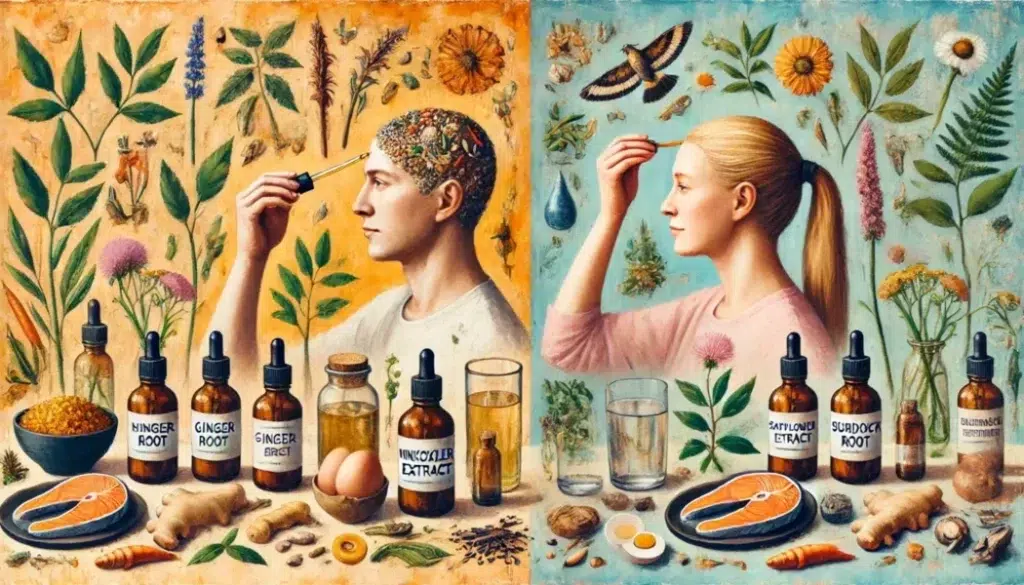🧫 What Causes Clogged Hair Follicles (and Why It Matters)
Hair follicles are tiny, tube-like structures located in the dermal layer of your skin. Each follicle contains a hair root, blood supply, and sebaceous glands, all working together to grow and sustain healthy hair. But like any system, when one part gets blocked or overwhelmed—everything suffers.
Clogged hair follicles are usually the result of a combination of factors:
Sebum overproduction: The scalp’s natural oil can accumulate when produced in excess, mixing with sweat and dirt.
Dead skin cell buildup: When the scalp isn’t exfoliated properly, cells layer up and block the follicle opening.
Residue from styling products: Sprays, gels, creams, and conditioners often leave microscopic traces that build up over time.

Dandruff and scalp conditions: Flaking skin can trap oil and debris at the root.
Environmental pollutants: Dust, smog, and toxins attach to the scalp daily and rarely get cleansed properly.
When follicles are clogged, oxygen and nutrients can’t properly reach the hair root. This leads to inflammation, restricted growth cycles, and ultimately—hair that’s thinner, weaker, or completely absent.
Over time, untreated blockages can push follicles into a state of miniaturization. The hair grows finer, takes longer to regrow, and in chronic cases, stops altogether. In extreme cases, follicles can enter dormancy or die off permanently—a condition known as fibrosis.
This is why identifying and addressing follicle health early is key. You’re not just improving your current hair—you’re preserving your future hair.
⚠️ Recognizing the Signs – Is Your Scalp Sending Warnings?
Most people don’t realize their hair issues are starting beneath the surface. Before noticeable thinning even begins, your scalp may already be warning you – you just need to know what to look for.
Here are the most common early signs of clogged hair follicles:
Greasy scalp shortly after washing: This usually indicates that your sebaceous glands are overactive and the excess oil isn’t being absorbed or released properly.
Persistent itchiness and irritation: An itchy scalp is often the first red flag. It suggests inflammation or bacterial imbalance—both linked to blocked follicles.
Flaky skin or dandruff buildup: Excessive shedding of skin cells may be a sign that your scalp’s natural exfoliation process is out of sync, causing obstruction.
Tiny bumps, redness, or “scalp acne”: When follicles are clogged, they can become inflamed or infected. These small bumps can be sore or just annoying—but either way, they’re a warning.

Hair that looks dull, limp, or lifeless: If your roots aren’t getting nutrients due to blockages, hair grows weaker, thinner, and lacks shine or volume.
Noticeable slowing of growth: If your hair growth cycle slows down for no clear reason—stress, diet, or seasonal change—it may be time to look at follicular health.
⚠️ Don’t mistake symptoms for styling problems
People often respond to these signs by switching products—new conditioner, different oil, stronger shampoo. But unless you address the actual scalp environment, no product will make a difference. In fact, layering new formulas over clogged follicles often makes things worse.
✅ Early action = faster recovery
The good news? If you act early, it’s entirely possible to clear the buildup, reduce inflammation, and revive sluggish follicles. You might not reverse the problem overnight, but you can stop it from getting worse—and that’s a win.
🌿 Game-Changing Ingredients That Unblock and Revive
Rosemary Extract: A natural vasodilator that boosts blood flow in the scalp, rosemary delivers more oxygen and nutrients to the follicles. Over time, this stimulation helps promote stronger, thicker hair.
Caffeine: Blocks the effects of DHT—a hormone linked to hair loss—while energizing follicles and extending the hair growth phase. Especially effective when included in leave-in formulas.
Niacinamide (Vitamin B3): Improves scalp elasticity, reduces inflammation, and strengthens the skin barrier around the follicles. A calm, stable scalp is essential for consistent growth.
Biotin (Vitamin H): Essential for keratin production, biotin supports hair structure from the root and reduces breakage in fragile strands.
Menthol: Provides a cooling effect that relieves itchiness and stimulates local circulation. It also adds a fresh, clean feel to scalp treatments.

Jojoba Oil: Closely mimics the scalp’s natural oil (sebum), helping to dissolve buildup and maintain a healthy moisture balance without clogging follicles.
Keratin: Reinforces the internal structure of each strand, making hair more resilient to heat, breakage, and environmental damage.
Hydrolyzed Wheat Protein: Penetrates the hair shaft to increase strength, volume, and elasticity. Helps retain moisture, reducing brittleness and frizz.
✅ Choose products that combine these ingredients in sulfate- and paraben-free formulas. These gentler options support follicle health instead of stripping it away.
💆♂️ Effective Treatments and Lifestyle Fixes
Cleansing and balancing your scalp is just the beginning. To reactivate weakened follicles and prevent future clogging, you’ll need a dual approach: targeted treatments and smart lifestyle choices.
🔬 Topical Treatments That Work
Minoxidil 5%: This FDA-approved solution helps by increasing blood flow to the scalp and extending the hair’s growth phase. It’s best applied to a clean, dry scalp twice daily. Results are typically visible after 3–6 months of consistent use.
Burdock Root Extract: Bursting with antioxidants and amino acids, this root detoxifies the scalp, reduces inflammation, and strengthens the follicle base.
Ginger Root: A natural stimulant, ginger boosts circulation and delivers anti-inflammatory benefits. It’s often used in serums to awaken dormant follicles.
Safflower Extract: Rich in linoleic acid, safflower reduces DHT naturally and nourishes the dermal papilla—the cellular engine behind hair production.
Angelica Sinensis (Dong Quai): Known as the “female ginseng,” this herb regulates hormones and provides phytoestrogens that counteract hormonal hair loss.
These ingredients often appear in growth tonics, scalp serums, or booster drops designed to complement your shampoo routine.

🌿 Lifestyle Shifts That Support Growth
Even the best treatments won’t succeed if your daily habits work against you. Here’s what actually helps:
Wash your hair regularly using gentle, scalp-focused formulas—especially after sweating or using styling products.
Exfoliate your scalp once a week to remove dead skin cells and encourage blood flow.
Eat for your follicles: Include protein, zinc, vitamin D, omega-3s, and biotin-rich foods like eggs, spinach, pumpkin seeds, and fatty fish.
Stay hydrated – your follicles are living cells and need water just like the rest of your body.
Reduce chronic stress – Elevated cortisol weakens the immune system and triggers inflammation. Combat it with sleep, deep breathing, movement, and adaptogenic herbs like ashwagandha or rhodiola.
⚠️ What to avoid?
- Overwashing with harsh shampoos
- Silicone-heavy styling products
- Tight hairstyles that pull on the scalp
- Smoking and excessive alcohol, both of which reduce circulation
Combining scalp care with nutrition, movement, and rest will give your follicles everything they need to perform at their best. Think of it like watering a plant—what happens above the surface depends entirely on what’s going on beneath it.
📚 Conclusion + FAQ
Healthy hair starts with a healthy scalp. And a healthy scalp depends on clear, functional follicles. Clogged hair follicles are one of the most underestimated causes of hair thinning and slow growth—but they’re also one of the most treatable.
By recognizing the signs early, using proven ingredients, applying targeted treatments, and making smart lifestyle shifts, you give your scalp everything it needs to recover and thrive.
The journey won’t be instant—but with consistency and the right support, your follicles can bounce back. And when your follicles are happy, your hair will show it.
Stay with us — the best is yet to come.
By following our advice, you’re doing the most you can for your hair.
Be the first to know when we publish new guides, tests, and proven strategies for stronger, healthier hair.
👉 Visit the About Me page to learn more about my journey, mission, and why helping people with hair health is so personal to me.
Want healthier, stronger hair? Discover 8 science-backed habits that protect your scalp and boost natural growth. Get your free PDF guide today!
Disclaimer: This article is for informational purposes only and is not a substitute for professional medical advice. Sensitive claims are supported with scientific references, and full product details can always be found on the official websites of the respective manufacturers or distributors.
Some links in this article are affiliate links. If you choose to make a purchase through them, I may earn a small commission at no extra cost to you — helping me keep HairGrowGenius running. Thank you for your support!

FAQ
1. How do I know if my hair follicles are clogged?
Look for signs like an oily scalp, itchiness, flaking, scalp bumps, and slower-than-usual hair growth. These are early indicators that follicles might be blocked.
2. Can clogged follicles lead to permanent hair loss?
Yes, if left untreated long enough, chronic inflammation can cause follicles to shrink or shut down completely—a process called fibrosis.
3. How long does it take to unclog follicles and see regrowth?
Results vary, but many people begin to notice improvement within 8–12 weeks when using targeted products and following a scalp-friendly routine.


Leave a Reply